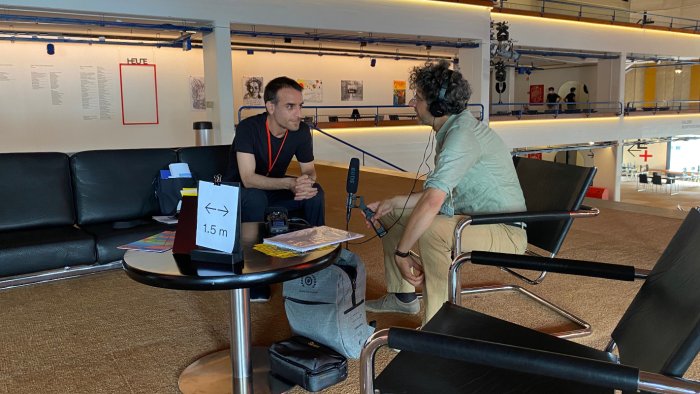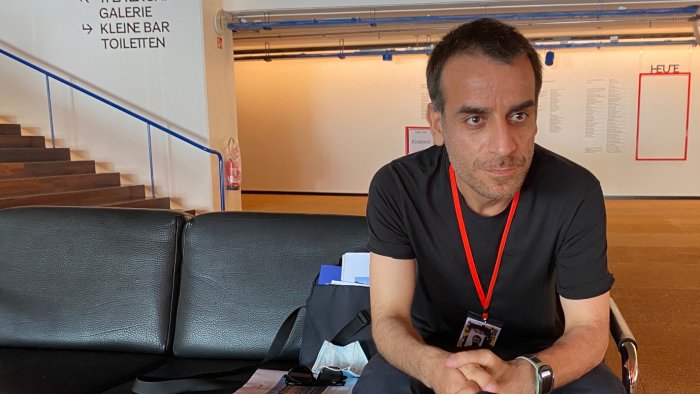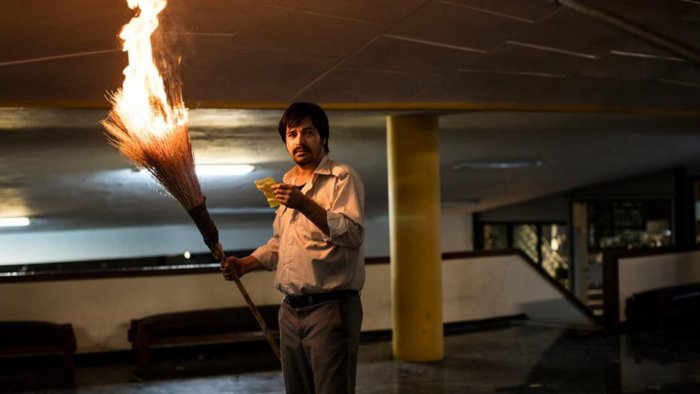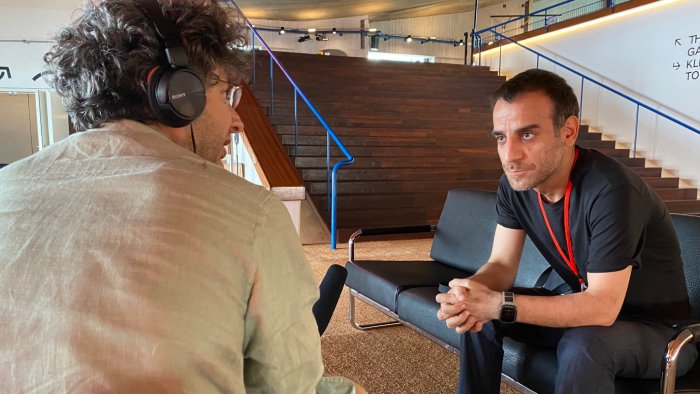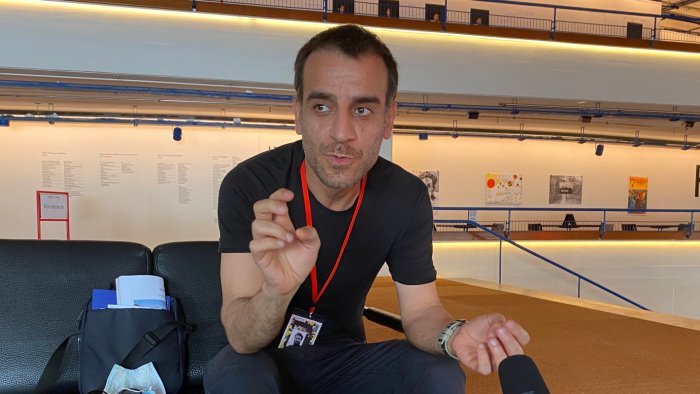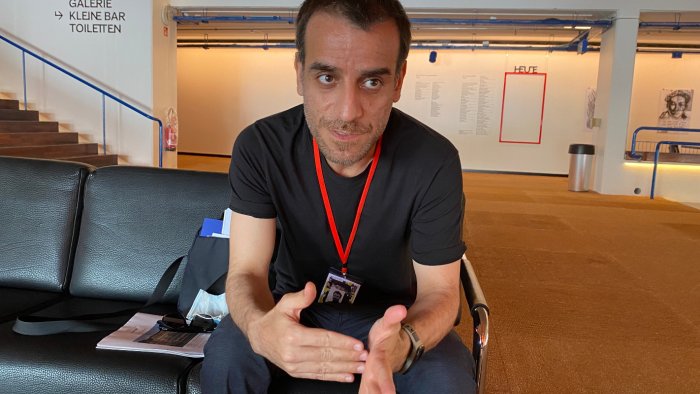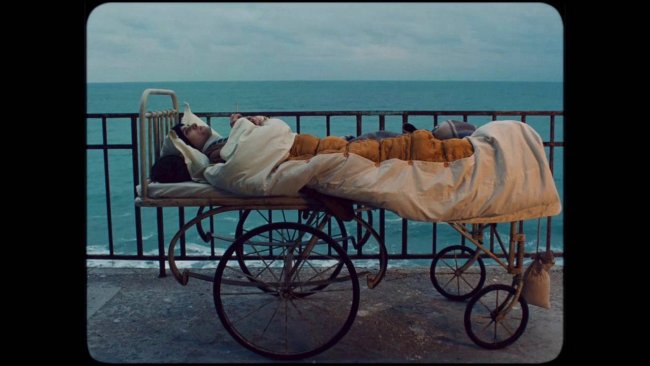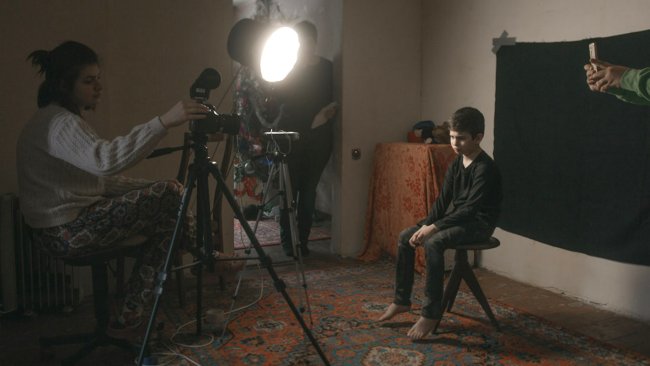Careless Crime | Shahram Mokri
[…] We can say that if some people set fire to a cinema theatre then it is the popularity of cinema that finally set fire to the entire Iranian people. What is at stake is the multiplicative power of cinema (something that pertains to the past by now?).
[…] With «Careless Crime», Mokri inserts himself into one of the crucial points in Iranian history, taking measures of both the reality and the legend of the connection between cinema and politics. However, his positioning equals his not taking a position, therefore frontally opposing the emancipatory rhetoric of History in terms of modern ruptures.
[…] Mokri’s aesthetic definitely departs from any Neo-Realist fidelity to reality, making any reality evaporate into imagination, the imagination of cinematic daydreaming.
Text: Giuseppe Di Salvatore | Audio/Video: Ruth Baettig
Podcast
Talk at the Bildrausch Filmfest Basel
Talk with Shahram Mokri about «Careless Crime» at Bildrausch Filmfest Basel.
Find a list of all our Podcasts here.
From real suspense to the suspense of reality – A homage to cinema
There is a film that is quoted in the middle of Shahram Mokri’s Careless Crime: Harold M. Shaw’s The Carelessness of Crime (1912). This film focuses on a hot topic for the beginning of cinema: its – often carelessly caused – fire, by which I mean the fire and burning of the cinema theatre. Historically, this has also constituted an important obstacle to the development of cinema, to the pleasure of its former moralist detractors, and the connection between the physical and political danger of cinema has also marked the beginning of Iranian cinema, especially the new wave of independent Iranian cinema. In fact, the event of the Cinema Rex fire in 1978, with 420 casualties is the focus of Mokri’s film, an event that allegedly triggered the Iranian Revolution in 1979 and, in any case, divided the Iranian society into two opposed factions that charged either the pro-Shah or the pro-Revolution supporters with responsibility for the fire. Independently of the eventual political responsibility, this fire has made the political opposition popular, so we can say that if some people set fire to a cinema theatre then it is the popularity of cinema that finally set fire to the entire Iranian people. What is at stake is the multiplicative power of cinema (something that pertains to the past by now?).
Now multiplication can make the situation more intense or more complex. Mokri deliberately choose the second option for its reflection on the power of cinema. There is another film that is inescapably quoted in Careless Crime, as it is the film that was screened at the Cinema Rex in Teheran when it burned down: Masoud Kimiai’s The Deer (1974), the ground-breaking work of Iranian arthouse cinema, and a film that explicitly used the polarisation of tradition and modernity, the popular motif of societal division during the Iranian Revolution. Even if this film states this divergence clearly, its reception has been quite complex, gaining the sympathy of very different political parties. Now, Mokri wants to get a complex picture of the entire situation not through the analysis of the political contradictions of apparently opposed visions – revolutionary traditionalism versus conservative modernism probably being the source of the proliferation of many political oxymorons in Iran – but through the injection of weaknesses and accidents in the system of (political and cinematic) power.
Takbali, the main character – one of the four criminals who set fire to the cinema – is a drug addict who wanders through Teheran like a sleepwalker – and who will give substance to the hypothesis of an act of mania, thereby watering down any grand conspiracy. In this way, he highlights the power of cinema as daydreaming, not something that can genuinely push the people on the street to overthrow a government… In Mokri’s filmic reconstruction of the crime in 1978, The Deer was only indirectly screened as an eventual screening within another film (actually created by Mokri himself using the colours of the Seventies), nothing but “another” Careless Crime. This film (in the film) displays the story of a cinema projection on the countryside and celebrates cinema as a trick, as magic, as amazement. The power of multiplication is taken literally as a multiplication of screens, of films like Chinese boxes containing nothing but other films. Mokri’s possible meta-cinematic reflection here is simply embodied in a puzzle of anecdotes. More than a substantial theory on cinema, the two Careless Crime‘s provide us with a mise en abyme that finally aims at …an ineffable gust of wind! What Takbali provides us in his disoriented walking are flashes of light that blind the camera lens…
With Careless Crime (co-written with Nasim Ahmadpour), Mokri inserts himself into one of the crucial points in Iranian history, taking measures of both the reality and the legend of the connection between cinema and politics. However, his positioning equals his not taking a position, therefore frontally opposing the emancipatory rhetoric of History in terms of modern ruptures (in this way opposing a perfectly Western pattern that has profoundly dominated the recent Iranian history…). Concerning the vexata quaestio of the responsibilities of the crime, his anecdotal, almost ephemeral version of the facts seems to be an acquittal, but actually amounts to a broad inclusion of everyone through the focus on a plural Mister Nobody. This is a j’accuse against the elementary political contraposition of friends and enemies, in this way joining one of the motives of the (cinema) Neo-Realism that has so much influenced Iranian cinema, but Mokri’s aesthetic definitely departs from any Neo-Realist fidelity to reality, making any reality evaporate into imagination, the imagination of cinematic daydreaming.
In this respect, the long shots that characterize Mokri’s films convey a directionality, almost a determinism, that is finally suspended through its own coiling corkscrewing into itself, for self-referentiality is not an intellectual exercise but a concrete scene on the screen, like a playful trick that blows up the linearity of narration through a precise line of narration. If Fish and Cat and Invasion used spiral movements in order to create mirroring effects, Careless Crime stages a multi-layered drama of mirrors in order to suspend reality on a spiral movement. Mirrors are as significant as enigmatic in Careless Crime, such as in a scene of the “older” Careless Crime, where only magic will give back the capacity of mirroring to a mysterious pond where no image is reflecting. Reflection and representation sink into the pond, and our consciousness is suspended at the last twist of a magical spiral. This is a homage to cinema. Let us believe in its power.
This article contains a third-party video. If you would like to watch the video, please adjust your settings.
Watch
ONLINE STREAMING (Switzerland) by Filmexplorer’s Choice on filmingo.ch
Info
Careless Crime – Jenayat-e bi degham | Film | Shahram Mokri | IRN 2020 | 139’ | Bildrausch Filmfest 2021
First published: July 01, 2021
